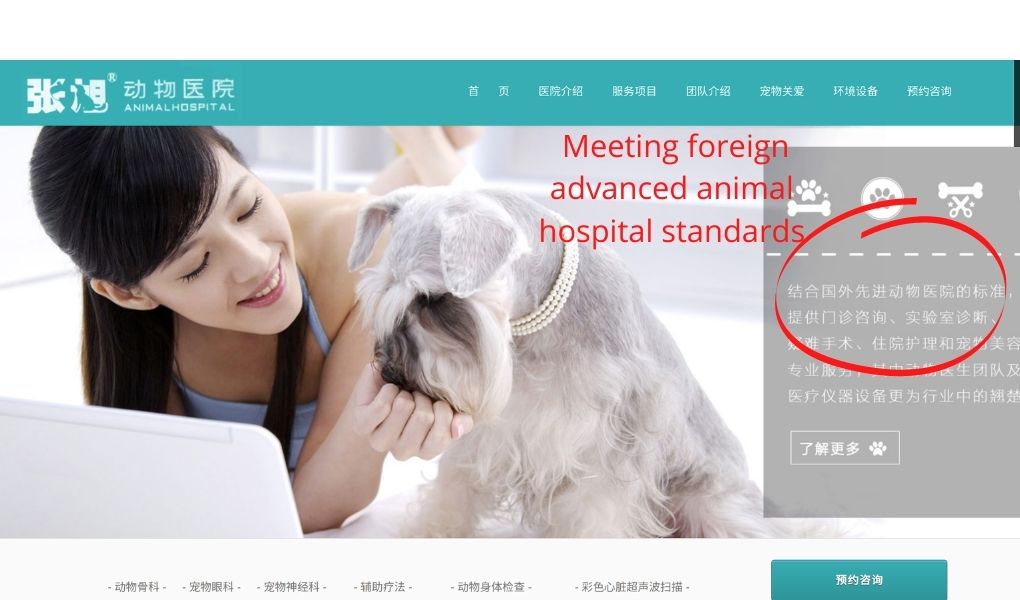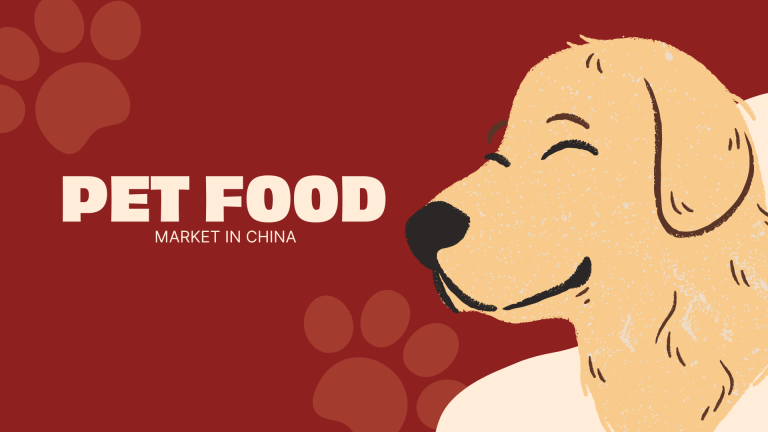E-commerce is a field where every market can find its place, and the dog market is not an exception. China needs Europe’s long expertise in dog education.
After years of development, China’s pet industry has now entered a period of rapid development. At present, China’s pet industry can be divided into three main categories:
- Pet breeding/sales;
- Pet supplies/food;
- Pet services.
Among them, the pet supplies/food market accounts for the highest proportion, and the pet service market has grown rapidly in recent years with the improvement of viewpoints and the increase of per capita consumption level.
This article will explain why.
The impotence of dogs owners in China
As you might have read it in our article “Those dog breeds that Chinese pet lovers adopt“, the pet market is quite recent in China, and pets education is something that Chinese owners just discovered.
Having no concrete example of how to raise a pet in their surroundings, they often neglect their dog’s needs by considering it as a material good, or on the contrary spoil it like a little child, the same way it also happens with some not-very-informed Europeans owners.

The life of Chinese city dogs is often closer to that one of a hamster than the one of a real dog, needing to run out every day. Sleeping in a rabbit cage, staying all day in a cramped apartment, getting outfits like a doll…
Gaps in dog training are common, which leads to barking all-day, anxiety, and aggressiveness. A real problem when a husky walks his owner and not the contrary, for this kind of dog breeds with a strong primitive instinct requiring a firm training.
With the lack of infrastructure to support them, Chinese owners are powerless to deal with their dog education. They often do not realize the responsibility and longevity of a dog before adopting one and would need to be the first educated!
10 trends in the Pet ECommerce in China (2024)
The Chinese pet e-commerce market presents a fertile ground for international brands in 2024, driven by several compelling factors:
- Surging Pet Ownership: China’s pet ownership rates have soared, with a growing middle class seeking companionship from pets. This demographic shift represents a vast consumer base ready to spend on pet care, food, and accessories, offering international brands a significant market entry point.
- Increased Spending on Pet Care: Chinese pet owners are increasingly willing to spend more on high-quality pet products, including premium food, health supplements, and innovative gadgets for their pets. This shift towards premiumization opens doors for international brands known for quality and reliability.
- E-commerce Boom: China’s e-commerce platforms have experienced exponential growth, providing an efficient distribution channel for international brands. Platforms like Tmall, JD.com, and Pinduoduo offer specialized pet sections, simplifying market access for foreign companies.
- Desire for International Products: There’s a strong preference among Chinese consumers for international pet products due to perceived higher quality and safety standards. Brands from countries with strong reputations in pet care can leverage this perception to gain a competitive edge.
- Emerging Pet Health and Wellness Trend: The focus on pet health and wellness is intensifying, with owners seeking products that offer nutritional benefits, promote physical activity, and ensure overall well-being. International brands with products catering to these needs can find a receptive audience.
- Innovative and Niche Product Demand: The market is ripe for innovative and niche pet products, including tech gadgets for pets, specialty foods, and personalized items. International brands offering unique products not readily available in China can carve out lucrative niches.
- Social Media and KOL Influence: The influence of Key Opinion Leaders (KOLs) and social media platforms like Weibo, Douyin, and Xiaohongshu (Little Red Book) is significant in shaping consumer preferences. International brands can collaborate with pet influencers and leverage these platforms for marketing, tapping into extensive networks of engaged pet owners.
Given these factors, 2024 presents a golden opportunity for international pet brands to enter or expand their presence in the Chinese market, leveraging digital platforms and aligning with local consumer trends towards premium and specialized pet care products.
Dog welfare is a sector to explore with Chinese e-commerce
Business opportunities for European companies are attractive in the field of dog education and pet welfare more generally.
- First, online platforms dedicated to the purchase of pet supplies. E-commerce is essential to gain a foothold in China whose consumers are connected.
- Chinese people are fond of learning skills books. Pet owners will not be reluctant to treat themselves with “How to educate your dog” and “All about dog behavior” translated into Chinese, as well as investing in all accessories related to training. The need is cruelly felt!

- Since it is trendy to have your dog wearing a coat and slippers, the dog textile market is much larger in China than in Europe, where dressing its dog is often mocked and considered as a ridiculous pet’s over protection. The difference is that Europe enjoys a temperate climate, whereas Northern winters in China may actually require dog equipment.
- Currently, many Chinese singles replace a family foundation by buying a dog. Their pet is then treated like a king child and receive a large budget for food and grooming. Dog grooming salons do not lack, but another space is certainly to devote to dog training with the opening of dressage schools for overwhelmed owners.
What’s the main difference between Chinese & European dog owners?
Europe has been working for decades on the welfare of domestic animals. Switzerland has for instance reconsidered the animal’s legal status in its legislation in 2003, no longer considering them as material goods but as living beings endowed with sensitivity.
Europeans will theoretically choose their future companion based on character’s compatibility, the experience of the dog master, and the usage of this dog: hunting, guarding, children proximity, etc.
Europeans traditionally appreciate Shepherds and hunting dogs. There are a lot of Labradors, Golden Retrievers, and German Shepherds to find in Western Europe. Some breeds that are quite popular in Europe – such as pointers, spaniels, or Dalmatian – are not to find in China, replaced by a variety of miniature dogs whose breeds are not necessarily all recognized in a studbook.
Canine education & welfare is getting more attention in China

China has experienced an extremely fast development. Its remarkable economic growth has allowed the brutal access of an entire population to new activities and consumption power, newness taking time to integrate into society. Pets are part of this newness to integrate, while domesticated animals were previously only used for agricultural work, hunting, guarding, or meat consumption.
China has to catch up in many sectors, although for other parts it’s modernity and responsiveness to change far exceeds Europe.
Canine education and animal welfare are concepts that the Chinese society needs time to integrate, a process that is likely to be much faster than Europe has done itself. In recent years, pets education and warfare in China are beginning progressively.
In many fields of pet warfare, the Chinese market is still learning from Europe. As pets are very important for Chinese owners and with their rising incomes, they are willing to pay for the best products for their pets. Many animal hospitals claim to meet Western standards or using imported products to attract pet owners.
Why & how pets welfare will improve in China?
If one wants to make a rough comparison, the example of pollution is rather expressive. Pollution in China is a huge problem inherent to a country’s industrial development. The situation in England during the industrial revolution was similar to coal factories and pollution peaks during this time were subsequently recognized as more harmful than the current air pollution of China.
Pollution is a problem that has taken a long time to be taken into account by Chinese authorities, which now benefits from the most advanced research in that field and from technological advances for which China is a pioneer.
It is quite realistic to think that the situation of domestic animals in China will be a much more seriously studied issue in the future.
The growing awareness for pets welfare offers great market potential for foreign Pets brands
As you may see now, the Chinese pet market has a huge potential and this is a great chance for European business, especially in the pet supplies and food market. The pets’ medicine market has the most potential for development, including eye drops, ear drops, and skin sprays.
With the increasing affluence in China, Chinese people tend to purchase imported products not only for themselves but also for their pets. European products are perceived as reliable and premium in China. In front of such a chance, are you ready to grab the opportunity?
Selling pet food and accessories in China’s booming pet market requires a blend of emotional appeal and strategic digital marketing. Here are five punchy tips to ensure your pet products not only reach the heart of pet owners but also become their top choice, leveraging the power of e-commerce, Douyin, and more.
1. “Unleash the Aww Factor: Captivate with Cuteness”
- Strategy: Utilize high-quality videos and pictures that capture the joy and companionship pets bring into our lives. Content that showcases pets enjoying your products, with a focus on their health and happiness, can create an emotional connection and drive engagement and shares.
2. “Paws and Play: Douyin’s Furry Influencers”
- Strategy: Harness the viral potential of Douyin by partnering with pet KOLs (Key Opinion Leaders) and their adorable furry friends. These influencers can showcase the benefits of your products through engaging videos, demonstrating your brand’s value in a genuine and relatable way.
3. “Tales of Tails: Storytelling That Sells”
- Strategy: Craft compelling stories around your brand and products. Whether it’s the journey of creating the healthiest pet food or designing the most comfortable pet bed, use narratives to highlight your commitment to pets’ well-being, making your products a part of every pet owner’s story.
4. “Build a Purr-fect Reputation: Trust Is Key”
- Strategy: Focus on building a strong brand reputation through quality products, excellent customer service, and transparent practices. Encourage and showcase customer reviews, testimonials, and user-generated content to build trust and credibility in the pet owner community.
5. “Barking Up the Right Tree: Engage with Empathy”
- Strategy: Create a community around your brand by engaging with pet owners on social media and forums. Offer advice, share pet care tips, and be responsive to feedback. Positioning your brand as a trusted resource for pet owners can transform customers into brand advocates.

You need some advice to develop your strategy in China?
Learn more about our agency and the way we can help you.
Read more about dogs in China:










Very good article that you should send to Pet organization, cure Dog instead of Eat them..;